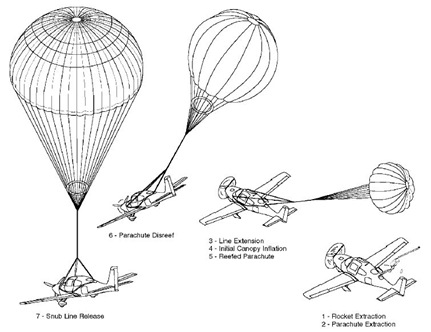Rick Beach has recently written two interesting posts about about Cirrus Airframe Parachute System (CAPS) pulls and fatal accidents that are well worth reading by any pilot who flies a Cirrus aircraft that is equipped with this last-resort and lifesaving parachute device. In the first post, Rick included the following chart showing CAPS saves along with fatal accidents in both summer and winter:
Rick then made the following two important points: 1) There have been too many fatal accidents and 2) The pattern of CAPS pulls has increased over time. Rick had also made the hypothesis that there would be more fatal Cirrus accidents in the dark months of winter but statistics for the summer of 2010 showed that this trend has reversed since the fall of 2009. Hence, he suspects that this might be due to the economic slowdown easing – meaning that more people are now flying during warmer and sunnier months. He also noted that as of January 2011, no one in a Cirrus aircraft has died when a CAPS system was properly activated according to its design criteria.
For the second post, Rick talked to James Turpen who reflected on his parachute pull (which is also further detailed in another blog post: Tales of CAPS Pulls — The Decision). Rick wrote that James:
…recalls thinking about the 15-turn spin in the Meadview, AZ, crash that took the lives of a family of four. He determined that if in a bad situation, then he was never going to crash without attempting to use CAPS. His instructor gave him the opportunity to practice that determination.
After his CAPS pull, James says he now flies with more attention paid to when he would pull the CAPS handle again.
He encourages any Cirrus pilot to not hesitate to pull. It’s not a bad outcome.
James’s advice is definitely worth listening to if you fly a CAPS equipped Cirrus.


